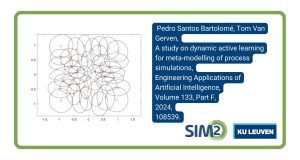Nature runs towards answers to sustain a world that living organisms can, somehow, survive more than billions of years. It always discloses ways to tackle on any occasion. As long as you pose the right question, nature unveils the relevant occurrence. It naturally stays juvenile.
You must have solved one of those mazes that appeared on the last page of a magazine. I believe you must have also jumped over dead ends as you got stuck at some point. Kept being stuck? Then you probably got annoyed and threw the pencil away because at the beginning you had a fairly simple looking goal to get out of this baffling place.
I recently came across a scholar article which claims to solve a maze with physical experiments [1]. The study mentions that the method can find the shortest and all other possible ways to exit the maze. Might Google be doing real-time physical experiments behind your mobile device to propose you the shortest distance from point A to B? Some other studies have also been published in the past illustrating approaches of solving mazes with physical experiments [2] [3]. If I succeeded to get your attention and trigger your curiosity so far, the following video can help you with the science behind this crawling occasion:
Soap opera in the maze: Geometry matters in Marangoni flows (YouTube)
Nature undoubtedly solves a maze without any trial-and-error or cheating. Although, unfortunately, it never communicates with you on the whereabouts of these answers. Instead, it perennially awaits you to ask the right question to reveal the truth.
Minutes after reading those papers, something just flashed up in my mind and I started interrogating myself to solve a maze with “continuum mechanics”. Have you ever heard of “conservation of mass”? Before going any further, I would like to shed light on some significant terms in my flash up. The conservation of mass is one of the fundamental laws of continuum mechanics together with the conservation of momentum and energy. It simply states that the total mass of a system without the transfer of matter and energy to or from the outside world should be constant over time. In other words, the total mass of the system at the beginning is equal to the mass of the system in the end, if the system is closed to mass and energy transfer beyond the system boundaries. Figure 1 demonstrates two prominent examples of continuum mechanics from chemical and physical science.

Figure 1. Conservation of mass; (a) conservation of mass in chemistry (image credit); (b) conservation of mass in fluid mechanics (image credit).
Traditional computational fluid dynamics (CFD) simulations are numerical solutions of conservation laws so as to predict dynamics changes in fluid mediums. Hence, CFD simulations, in principle, should be able to solve a maze as physical experiments do. Following this, I immediately built up and ran a simple CFD simulation to alleviate my curiosity [4]. Figure 2 illustrates simulation results carried out for a maze where air enters inside a fully sealed structure with single and double exits. The results show that the simulation sufficiently relies on conservation laws, thereby solving the maze through this unusual trial to find the shortest (highest velocity magnitude at outlet) route to the closest outlet, as well as to all remaining outlets. Though CFD simulations often tend to take hours to years to converge to a result, this case only requires a couple of seconds until the very first iterations of the continuity equation come to converge. I do like being a-maze-d by nature over and over again. The deeper you get, the more rewarding it becomes.
.png)
Figure 2. CFD simulation results for (a) single and (b) double outlets.
Before closing, I would like to rephrase the main takeaway of this writing. It is not about CFD simulations but it is about content to engage people from another perspective. If I merely started with surface tension, continuum mechanics, and any other technical terms; you would have perhaps avoided reading this at all. In the Charming project, we are currently researching immersive technologies and their integration in education and training. Engineering, technology, and pedagogy are keeping up a strong collaboration to succeed. Would you like to get updated on our progress in this challenging adventure? Do not forget to subscribe us on social media.
[1] https://www.nature.com/articles/463272c [2] https://www.newscientist.com/article/mg14519652-900-solving-a-maze-with-excitable-chemistry/ [3] https://pubs.acs.org/doi/10.1021/ja9076793 [4] CFD simulations were carried out in OpenFOAM for 2D, laminar, and transient air flow. Do not hesitate to contact for further details.






